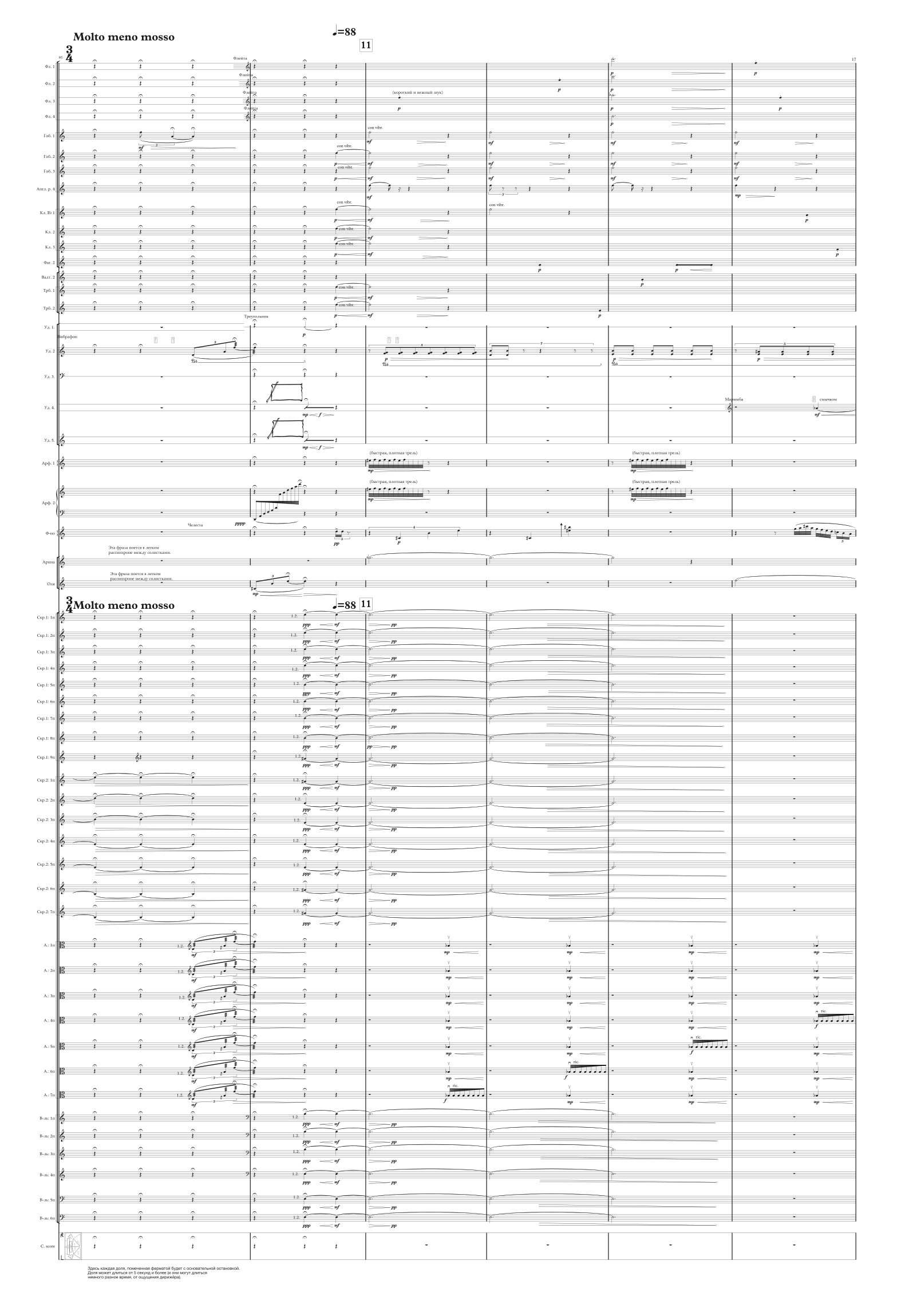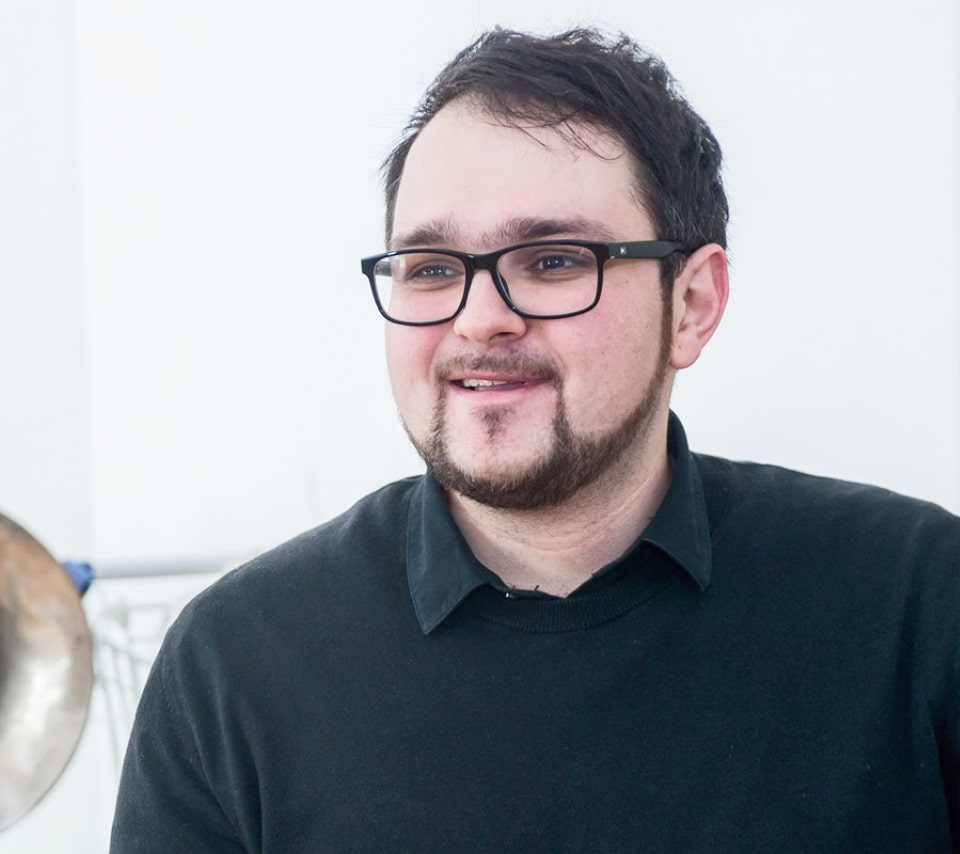Russian Music 2.1 Composition
TERRACOTTA
for full symphony orchestra
When I was writing Terracotta, I perceived an orchestra to be a vast acoustic stress field where we can observe from an outsider’s perspective the actions of very concentrated forces. This is similar to what happens when you watch thunder: the ever-changing “theatre of nature in action” unfolds in a vast space. In Terracotta the visual, performative component is key The piece is saturated with live and in places “explosive” energy. During the work I thought at least 30 times that similar pieces should be performed by youth orchestras where musicians, as I see it, find it easier to come up with unusual ideas. Terracotta has a part that I call Hundertwasser — named after the Austria architect and artist. For me the link with his work is intuitive: it is highly likely that I’m bringing him in as a symbolic “object of presence”. At the very least, in the sheet music I did not write anything about this issue — these are my inner workings.

Score sample
OTHER WORKS




